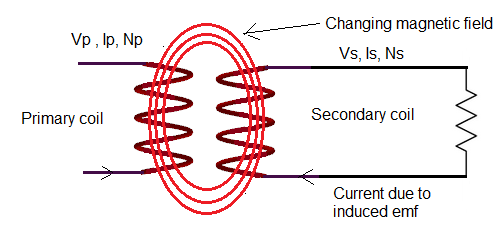How do Electric Transformers Work?
Definition of an Electric Transformer
An electric transformer is an electrical device that increases or decreases the AC voltage from a primary circuit, including an electric coil, to a secondary circuit, which includes another electric coil.
Principle of an Electric Transformer
The principle upon which voltage and current are transformed (increased or decreased) is magnetic mutual induction. If an AC voltage source supplies electrical energy to a coil, called the primary coil, a changing magnetic field (due to alternating voltage, AC) is created inside and around the coil. (See figure below)

If a second coil (secondary coil) is placed close to the primary coil and within the line of flux, the same changing magnetic field created in the primary coil will induce an emf in the secondary coil (Faraday's law).

Transformer Equation and Efficiency
Let \( V_p \) be the voltage across the primary coil, \( I_p \) the current in the primary circuit, and \( N_p \) the number of turns of the primary coil.
Let \( V_s \) be the voltage across the secondary coil, \( I_s \) the current in the secondary circuit, and \( N_s \) the number of turns of the secondary coil.
For low frequencies of the AC voltage in the primary, we have the following definitions and relationships between the voltages and currents in the primary and secondary circuits.
1) The efficiency \( \eta \) of a transformer is defined by:
\[
\eta = \dfrac{\text{power supplied by secondary}}{\text{power supplied by primary}} = \dfrac{I_s V_s}{I_p V_p}
\]
If there are no losses (losses negligible), \( \eta \approx 100\%\).
If there are losses, \( \eta < 100\%\).
2) When losses are negligible, the power in the secondary is equal to the power in the primary.
\[
I_p V_p = I_s V_s \quad \text{and} \quad \eta = 100\%
\]
3) Transformer equation:
\[
\dfrac{V_s}{V_p} = \dfrac{N_s}{N_p}
\]


